Dealing with Spiders and Insects: A Safety Guide
Welcome to your ultimate guide for managing spider and insect encounters in both your home and outdoor spaces. Whether you’re a nature lover or someone who prefers to keep these critters at bay, it’s essential to know how to safely handle these situations. Spiders and insects can evoke a wide range of emotions, from fascination to fear, but understanding them is the first step in ensuring your safety and well-being. This guide is packed with tips and strategies that will empower you to tackle any unwelcome visitors with confidence.
When it comes to spiders, knowledge is your best defense. There are numerous species that might find their way into your home, but not all of them are harmful. For example, the house spider is often mistaken for more dangerous varieties, but it poses little threat to humans. On the other hand, the infamous black widow and the brown recluse are two spiders that deserve your attention due to their venomous bites. Being able to identify these spiders is crucial for your safety. Look for distinctive features such as:
- Coloration: Black widows are glossy black with a red hourglass shape on their abdomen.
- Size: Brown recluses are typically brown with a violin-shaped mark on their back.
By familiarizing yourself with these characteristics, you can quickly determine whether the spider in your space is a friend or foe.
Insects can be just as concerning as spiders, especially when it comes to species like wasps and certain beetles. Wasps, for instance, are notorious for their painful stings and can become aggressive if they feel threatened. To avoid unpleasant encounters, it’s vital to recognize these insects. Some identifying features include:
- Color: Wasps are usually bright yellow and black.
- Body Shape: They have a slender body compared to bees.
Being aware of these details can help you stay safe while enjoying your outdoor spaces.
How do you know if you have a problem? Spotting the signs of an infestation early can save you a lot of headaches. Look for:
- Webs: An abundance of spider webs in corners or around windows.
- Droppings: Insect droppings can often be found near nests.
- Buzzing or Crawling Sounds: Unusual noises can signal an active nest.
If you notice any of these signs, it’s time to take action before the situation escalates into a full-blown invasion.
To keep spiders and insects at bay, it’s essential to identify their common entry points. These can include:
- Cracks in walls: Small openings can provide easy access.
- Windows and doors: Ensure they are properly sealed.
- Ventilation systems: Check for gaps where pests can enter.
By sealing these areas, you can significantly reduce the chances of unwanted guests in your home.
Did you know that the time of year can impact spider and insect activity? During warmer months, many species become more active, seeking food and shelter. Understanding these seasonal patterns allows you to prepare accordingly. For instance, spring and summer often see a surge in spider activity as they emerge from hibernation. On the flip side, fall might bring insects indoors as they search for warmth. Being aware of these trends can help you stay ahead of any potential invasions.
When it comes to removing spiders and insects, safety should always come first. There are several methods you can use:
- Catch and Release: Use a jar and a piece of paper to trap and release the insect outside.
- Vacuuming: For spiders, a vacuum can be an effective tool—just remember to empty it outside afterward.
- Natural Deterrents: Essential oils like peppermint and tea tree oil can be effective in repelling pests.
These techniques allow you to handle the situation without harming the creatures involved, promoting a more harmonious coexistence.
Prevention is key when it comes to keeping your home free of spiders and insects. Implementing effective strategies can make a world of difference. Start by maintaining a clean living space—regularly vacuuming and decluttering can remove potential nesting sites. Additionally, consider using natural repellents to deter these creatures. You can create a simple spray using water and essential oils, making your home smell delightful while keeping pests at bay.
Looking for a way to keep spiders and insects away without resorting to harsh chemicals? Here are some natural repellents you can easily make at home:
- Peppermint Oil Spray: Mix water with a few drops of peppermint oil in a spray bottle.
- Citrus Peels: Placing citrus peels around entry points can deter pests.
These natural options are not only effective but also eco-friendly, creating a safer environment for you and your family.
Finally, regular home maintenance can minimize the likelihood of infestations. Here are a few essential practices:
- Seal Cracks: Regularly inspect and seal any cracks or gaps in your walls and foundation.
- Trim Vegetation: Keep plants and shrubs well-trimmed and away from your home.
- Store Firewood Properly: Keep firewood stacked away from the house to prevent pests from taking up residence.
By incorporating these practices into your routine, you can create a less inviting environment for spiders and insects, ensuring your home remains a safe and comfortable haven.
Q: What should I do if I get bitten by a spider?
A: If you suspect a bite from a venomous spider, seek medical attention immediately. For non-venomous bites, clean the area and apply a cold compress.
Q: Are all spiders harmful?
A: No, many spiders are harmless and even beneficial as they help control insect populations.
Q: How can I prevent insects from entering my home?
A: Seal entry points, maintain cleanliness, and use natural repellents to keep insects at bay.
Q: What's the best natural repellent for spiders?
A: Peppermint oil is highly effective as a natural spider repellent. Mix it with water and spray around your home.
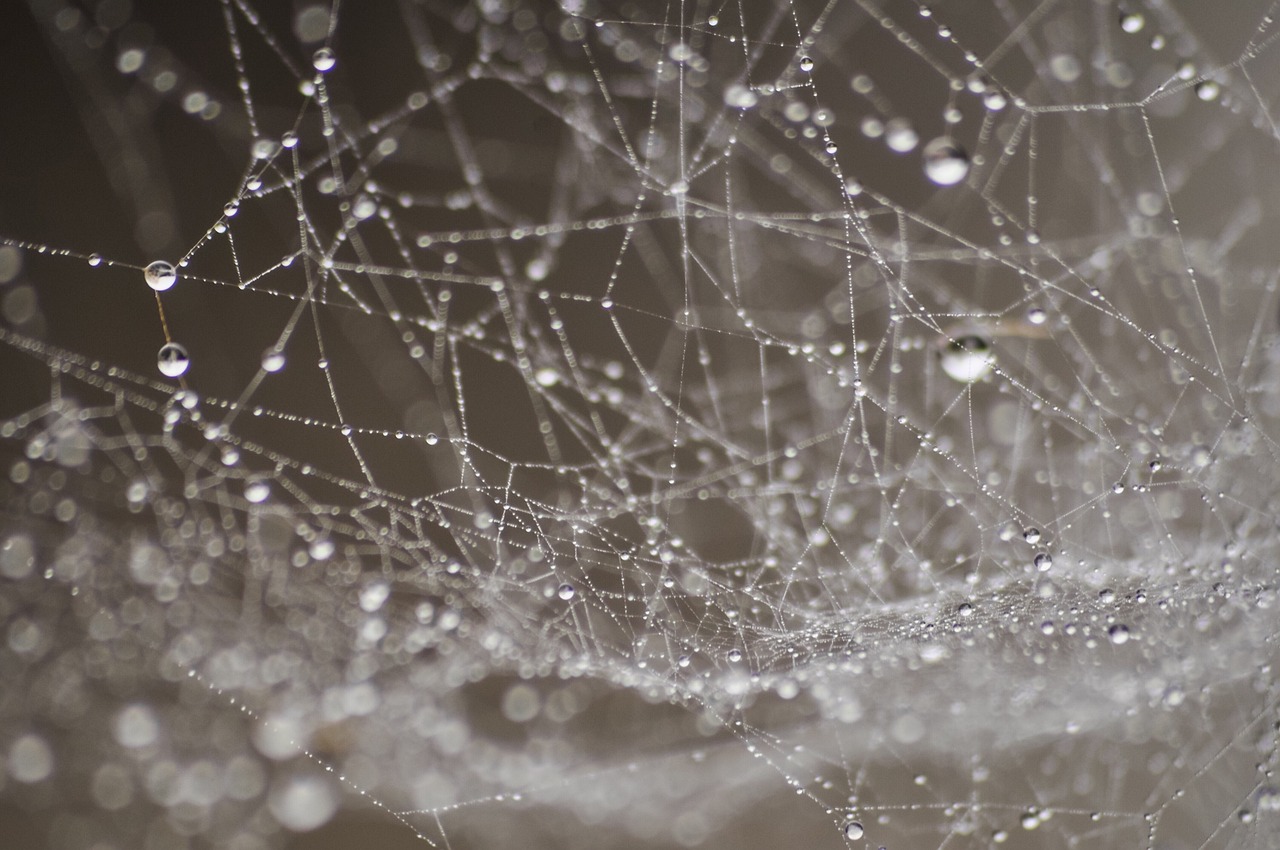
Understanding Common Spiders
When it comes to spiders, many people experience a mix of fear and curiosity. It's essential to understand that not all spiders are out to get you; in fact, most are harmless and play a crucial role in our ecosystem by controlling pest populations. However, knowing how to identify common spider species can help you distinguish between those that are beneficial and those that may pose a risk to you or your family.
Let’s dive into some of the most common spiders you might encounter in your home:
- House Spider: These are typically small, brown, and found in corners or dark areas. They are harmless and help keep other pests at bay.
- Black Widow: Easily identifiable by their glossy black bodies and the distinctive red hourglass shape on their abdomens, these spiders are venomous and should be treated with caution.
- Brown Recluse: This spider is light brown and has a violin-shaped marking on its back. Its bite can be dangerous, causing necrosis, so it's vital to know how to spot one.
- Orb-Weaver: Recognizable by their large, round bodies and intricate webs, these spiders are usually harmless and beneficial, as they catch a variety of insects.
Understanding their behaviors is just as important as recognizing their appearance. For example, house spiders prefer to stay hidden, often making their webs in quiet corners, while orb-weavers are more visible, creating large webs in gardens or between trees. Black widows and brown recluses tend to avoid human interaction but can be found in basements, sheds, or woodpiles, making it crucial to be vigilant when reaching into such areas.
Another aspect to consider is the seasonal behavior of these spiders. During warmer months, you might notice an increase in spider activity as they seek food and mates. Conversely, in colder months, many spiders will retreat to warmer areas, such as inside your home. This seasonal pattern means that you should be especially alert during spring and summer when spiders are most active.
By familiarizing yourself with these common spiders, their habits, and their environments, you not only empower yourself to react appropriately during an encounter but also foster a greater appreciation for these often-misunderstood creatures. After all, the more you know, the less you have to fear!
Q: Are all spiders dangerous?
A: No, most spiders are harmless and actually beneficial as they help control insect populations.
Q: How can I tell if a spider is venomous?
A: Look for distinctive markings, such as the red hourglass on black widows or the violin shape on brown recluses. If you're unsure, it's best to avoid contact.
Q: What should I do if I find a spider in my home?
A: If it's harmless, you can leave it be or gently relocate it outside. For venomous spiders, it's best to contact a pest control professional.
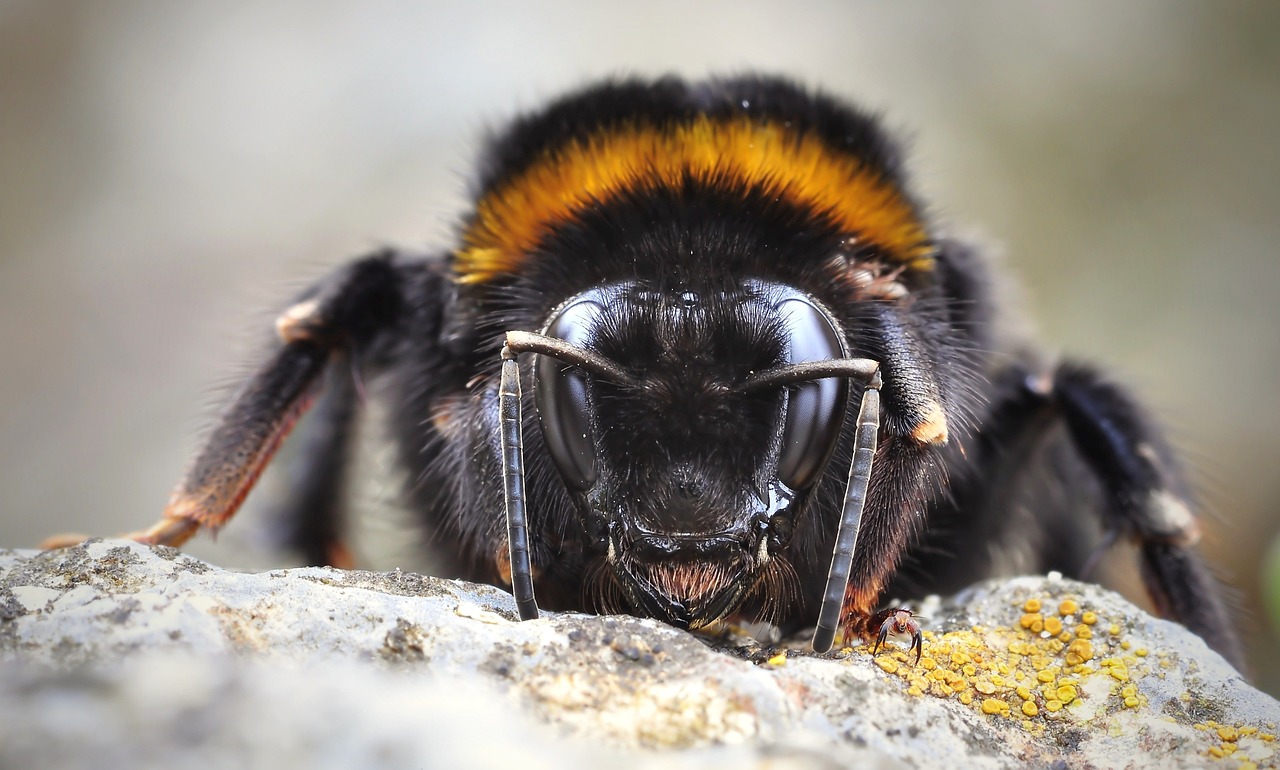
Identifying Harmful Insects
When it comes to our homes, not all insects are created equal. Some are harmless little critters that help our ecosystems, while others can pose serious risks to our health and well-being. Understanding how to identify harmful insects is crucial for keeping your living space safe. This section dives into the most common harmful insects, detailing their appearances, behaviors, and the potential dangers they bring.
One of the most notorious harmful insects is the wasp. With their slender bodies and distinctive yellow and black stripes, wasps can often be found buzzing around outdoor spaces, especially during late summer and early fall when food sources are abundant. While they can be beneficial for pest control, their stings are painful and can trigger severe allergic reactions in some individuals. If you see a wasp nest, it’s best to keep your distance and contact a professional for removal.
Another insect to watch out for is the black widow spider. Although technically an arachnid rather than an insect, it deserves mention due to its venomous bite. The female black widow is easily identifiable by her shiny black body and the distinctive red hourglass marking on her abdomen. If you spot one, be cautious—these spiders prefer dark, undisturbed areas like basements and garages. Their bites can cause severe pain and muscle cramps, so it’s essential to seek medical attention if bitten.
Additionally, bed bugs have become a significant concern for many homeowners. These tiny, reddish-brown insects are notorious for their ability to hide in the seams of mattresses and furniture. Their bites can lead to itchy welts and allergic reactions, making them a nuisance that disrupts sleep and comfort. Regular inspections of your bedding and furniture can help you catch an infestation early.
Here’s a quick reference table to help you identify some of the most harmful insects:
| Insect | Identifying Features | Risks |
|---|---|---|
| Wasp | Slender body, yellow and black stripes | Painful sting, allergic reactions |
| Black Widow | Shiny black body, red hourglass marking | Severe pain, muscle cramps |
| Bed Bug | Reddish-brown, oval shape, about the size of an apple seed | Itchy welts, disrupted sleep |
It’s essential to remain vigilant and informed about these harmful insects. If you notice any signs of their presence, such as wasp nests, bites on your skin, or unusual marks on your bedding, take immediate action. Identifying these pests early can save you from a lot of hassle and discomfort later on.
In conclusion, knowing how to identify harmful insects is your first line of defense against potential problems. Keep your eyes peeled, and don’t hesitate to reach out to pest control professionals if you’re unsure about an insect in your home. Your safety and peace of mind are worth it!
- What should I do if I get bitten by a harmful insect? If you experience severe symptoms like swelling or difficulty breathing, seek medical attention immediately. For minor bites, clean the area and apply a cold compress.
- How can I prevent harmful insects from entering my home? Seal cracks and crevices, keep your home clean, and remove standing water to deter insects.
- Are all spiders dangerous? No, most spiders are harmless and actually beneficial as they help control pest populations.
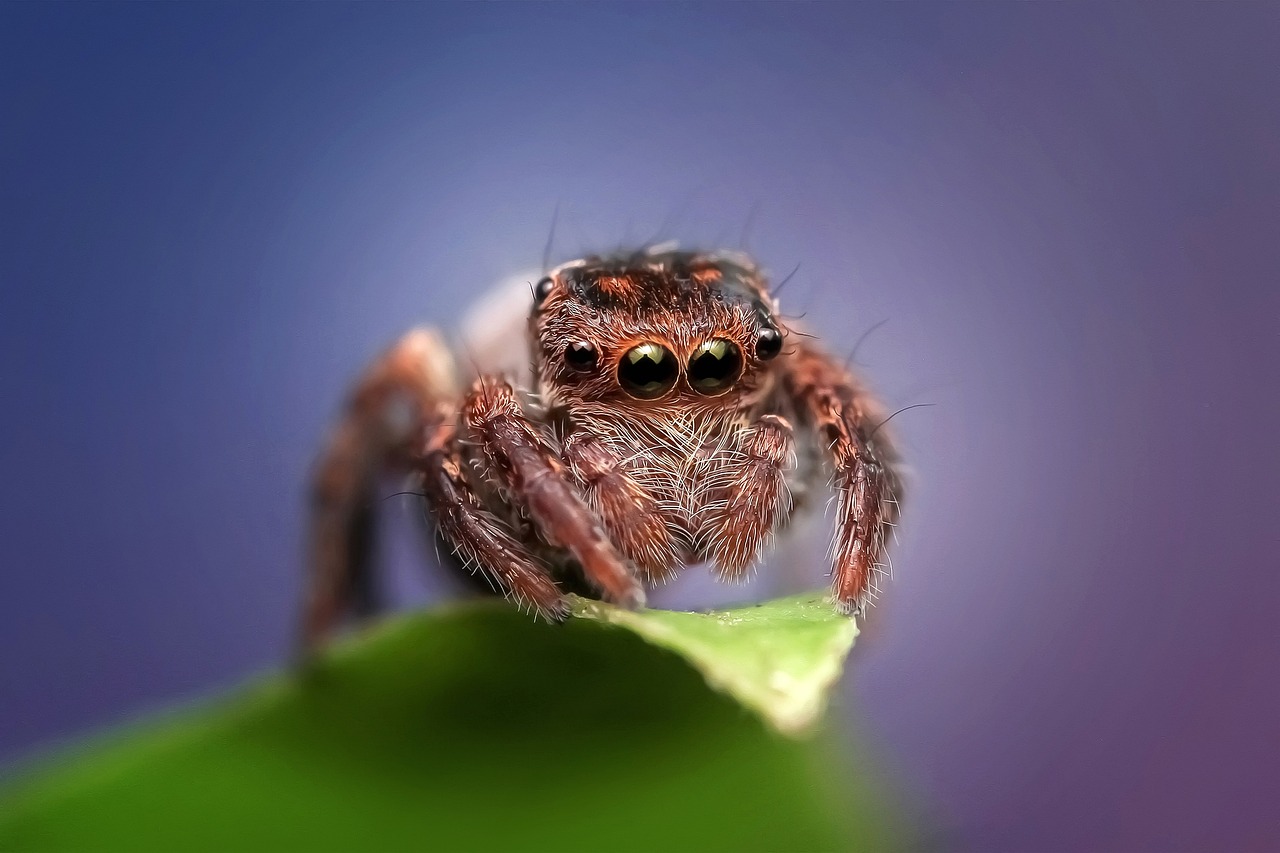
Signs of Infestation
When it comes to dealing with spiders and insects in your home, being able to recognize the is essential. Ignoring these signs can lead to a larger problem down the line, and nobody wants to share their living space with uninvited creepy-crawlies! So, what should you be on the lookout for? First off, if you start noticing an increase in the number of spiders or insects, it’s a clear indication that something is amiss. But it's not just about the quantity; the type of spider or insect matters too.
Another telltale sign is the presence of webs or nests. If you find spider webs in corners, under furniture, or in your garage, it’s time to take action. Similarly, if you spot nests—especially those belonging to wasps or hornets—near your home, consider it a red flag. These nests can be a breeding ground for more pests, and they can pose a danger to you and your family.
Moreover, you might notice droppings or shed skins, which are often left behind by insects like cockroaches or spiders. These remnants can be a clear indicator of an infestation. To help you visualize this better, here’s a quick table summarizing some common signs of infestation:
| Signs of Infestation | What to Look For |
|---|---|
| Increased Sightings | More spiders or insects than usual |
| Webs or Nests | Visible spider webs or insect nests |
| Droppings | Small dark droppings or shed skins |
| Unusual Noises | Scratching or buzzing sounds, especially at night |
Additionally, be aware of any unusual noises in your home. If you hear scratching or buzzing sounds, particularly at night, it could indicate that pests are scurrying about. This is especially true for rodents and some insects that are more active after dark. So, if you're lying in bed and hear something that sounds like a tiny party going on in your walls, it might be time to investigate!
Lastly, don't forget about the odors. Some insects, like cockroaches, can emit a musty smell. If you notice any unusual or unpleasant odors in your home, it may be time to take a closer look. Remember, the sooner you recognize these signs, the quicker you can act to reclaim your space from these unwelcome guests!
Q1: What should I do if I find a spider in my home?
A1: If you find a spider, it's best to identify its type. If it's harmless, you can safely catch it and release it outside. If it's potentially dangerous, consider contacting a pest control professional.
Q2: How can I tell if I have a wasp nest?
A2: Look for small, paper-like nests, often found in sheltered areas like eaves or attics. You may also notice an increase in wasp activity around your home.
Q3: Are all spiders harmful?
A3: No, many spiders are harmless and can even be beneficial as they help control insect populations. However, it's essential to know which ones are dangerous, like the black widow or brown recluse.
Q4: What natural methods can I use to repel insects?
A4: Essential oils like peppermint or tea tree oil can act as natural repellents. Spraying diluted solutions around entry points can help deter pests.
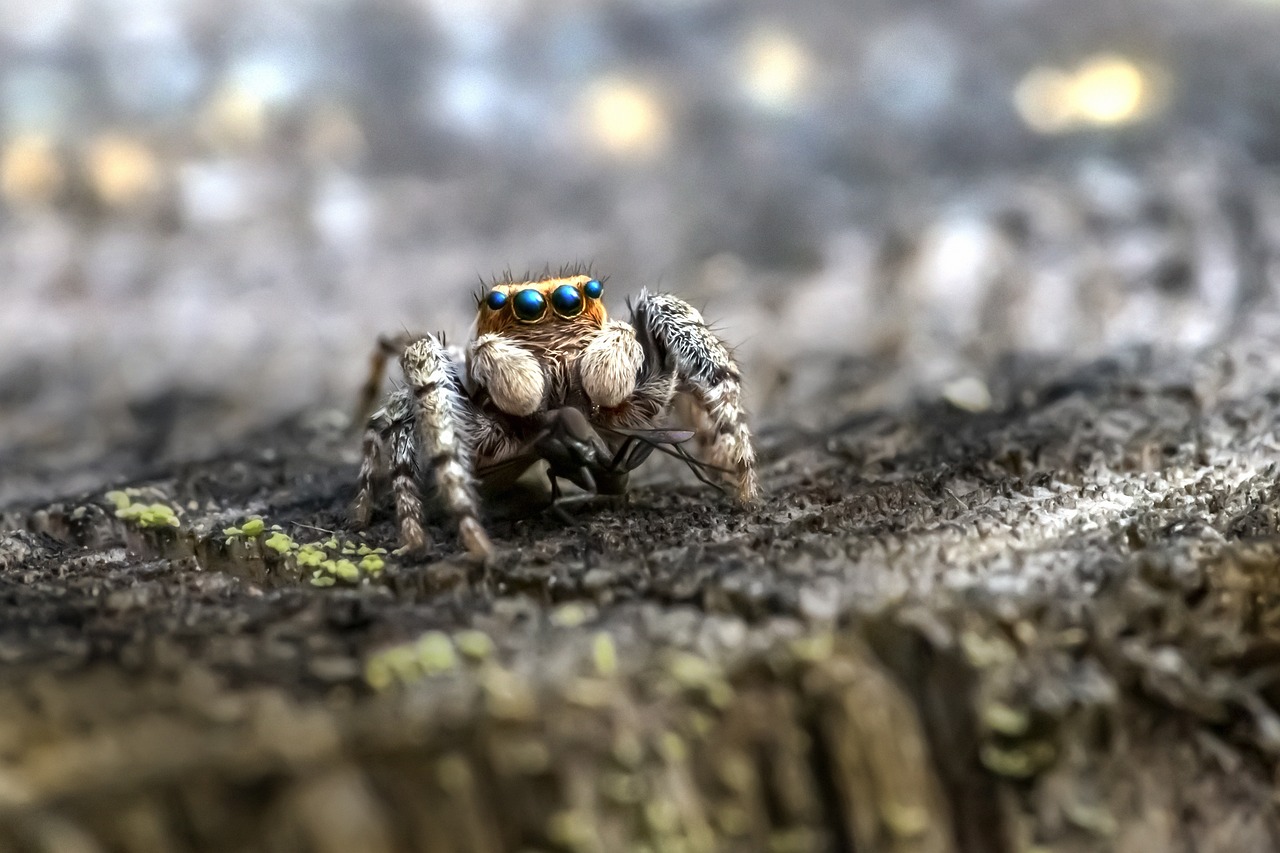
Common Entry Points
When it comes to dealing with spiders and insects in your home, understanding their is crucial. These pests are often more adept at finding their way into our spaces than we might realize. By identifying these entryways, you can take proactive measures to seal them off and reduce the likelihood of unwanted visitors. Think of your home as a fortress—if the walls are strong and well-maintained, it’s much harder for intruders to get in!
One of the most common entry points is cracks and gaps in the foundation of your home. Even the tiniest openings can serve as an invitation for spiders and insects. Inspect the foundation regularly and fill any visible cracks with caulk or foam sealant. Additionally, don’t overlook window and door frames; they can warp over time, creating gaps that are perfect for pests. Installing weather stripping can help close these gaps and keep your home sealed tight.
Another frequent entry point is ventilation openings. Vents are essential for air circulation but can also be a gateway for insects. Consider installing fine mesh screens over vent openings to prevent pests from entering while still allowing air to flow. Similarly, chimneys can be a major entry point, especially for larger pests like rodents. Ensure that chimneys are capped properly to keep unwanted creatures out.
Moreover, drainage systems and gutters can attract insects, particularly if they are clogged with debris. Regularly cleaning your gutters and ensuring that water drains properly can help minimize the risk of attracting pests. Standing water is a breeding ground for mosquitoes, so keep your yard free of stagnant water and ensure that drainage systems are functioning correctly.
Lastly, be mindful of plants and landscaping that are too close to your home. Overgrown vegetation can create a bridge for pests to access your home. Trim back any shrubs or trees that are touching your house, and consider using mulch sparingly, as it can harbor insects. By maintaining a clear barrier between your home and the surrounding landscape, you can significantly reduce the chances of spiders and insects making their way indoors.
In summary, by paying attention to these common entry points—foundation cracks, window and door frames, ventilation openings, drainage systems, and landscaping—you can fortify your home against unwanted spider and insect invasions. Taking these steps will not only enhance your comfort but also ensure a safer living environment for you and your family.
- What are the most common entry points for spiders and insects?
Common entry points include cracks in the foundation, gaps in windows and doors, ventilation openings, and overgrown landscaping.
- How can I seal entry points effectively?
You can use caulk or foam sealant for cracks, install weather stripping for doors and windows, and use mesh screens for vents.
- Are there specific plants that attract insects?
Yes, certain plants can attract insects. Keeping your landscaping trimmed and avoiding overgrown vegetation can help minimize this risk.
- How often should I check for entry points?
It's a good idea to inspect your home for entry points at least twice a year, particularly before and after seasonal changes.
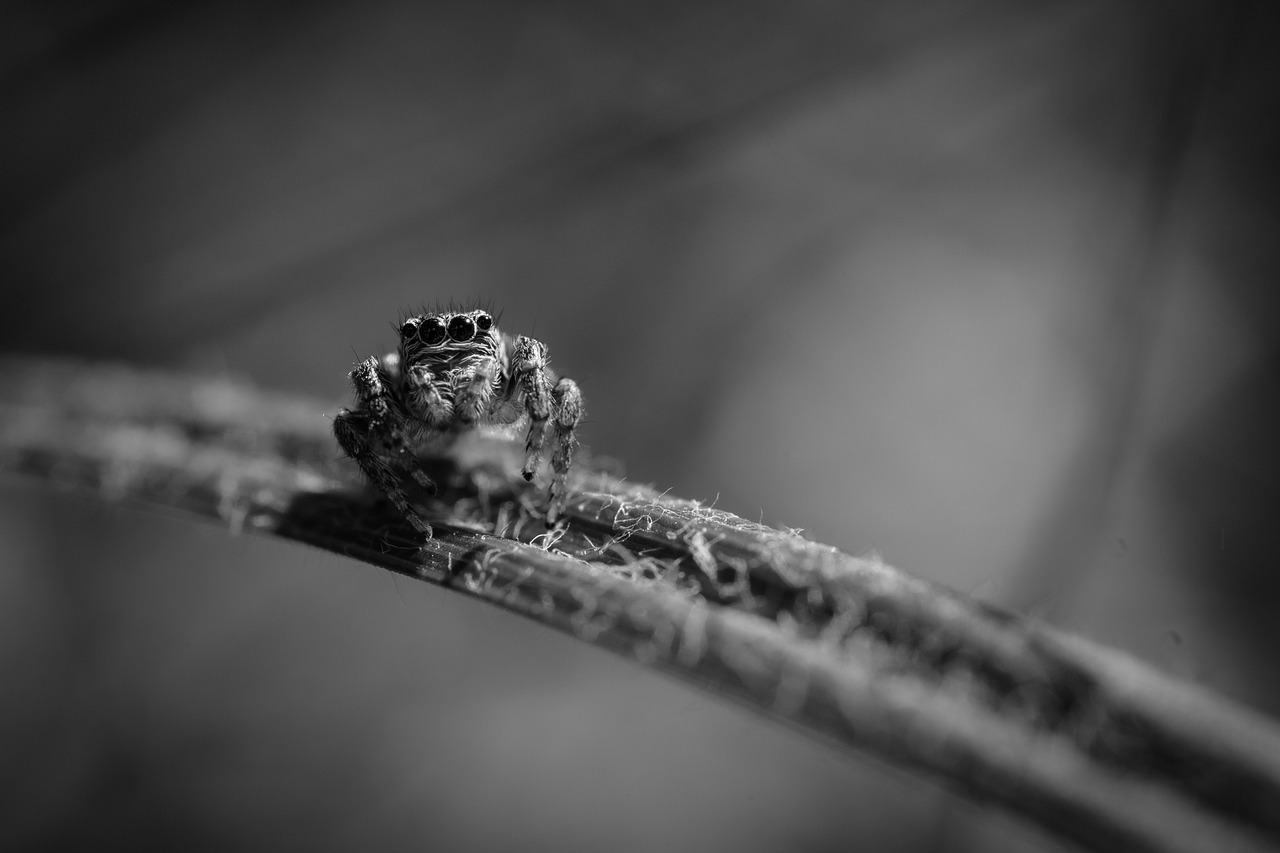
Seasonal Activity Patterns
Understanding the of spiders and insects is crucial for effective management and prevention strategies. Just like us, these creatures have their own schedules influenced by the changing seasons. For instance, as the weather warms up in spring, many spider species emerge from their winter hiding spots, ready to mate and establish their territories. You might notice more webs appearing in your garden or around your home, as these eight-legged architects begin their work.
In summer, the activity peaks. This is when you might find an increase in not just spiders, but also various insects that can attract them. Think of it as a buffet for spiders; the warmer temperatures and abundant food sources lead to a surge in their populations. You might spot garden spiders or orb weavers spinning intricate webs in your backyard, taking advantage of the vibrant ecosystem around them.
As the leaves start to change in autumn, many spiders and insects prepare for the colder months ahead. Some will seek refuge indoors, looking for warm, cozy spots to spend the winter. This is when you may notice more spiders making their way into your home, often through small cracks and openings. It's essential to be vigilant during this time, as their presence can signal that they are seeking shelter from the dropping temperatures.
Winter brings a slowdown in activity for most spiders and insects. Many species enter a state of dormancy, hiding away until the temperatures rise again. However, some resilient types, like the winter spider, can still be spotted. They are adapted to survive the cold and may even become more visible when food sources are scarce.
To help you visualize these patterns, here’s a simple table summarizing the seasonal activity of common spiders:
| Season | Spider Activity | Common Species |
|---|---|---|
| Spring | Emergence and mating | Wolf Spider, Garden Spider |
| Summer | Peak activity | Orb Weaver, Jumping Spider |
| Autumn | Seeking shelter indoors | House Spider, Brown Recluse |
| Winter | Reduced activity; some species dormant | Winter Spider |
By understanding these seasonal patterns, you can better prepare for encounters with spiders and insects throughout the year. For example, sealing entry points during the fall can prevent spiders from making your home their winter haven. Likewise, keeping your outdoor spaces tidy in spring and summer can help reduce the attraction of insects, thereby minimizing the spider population around your home.
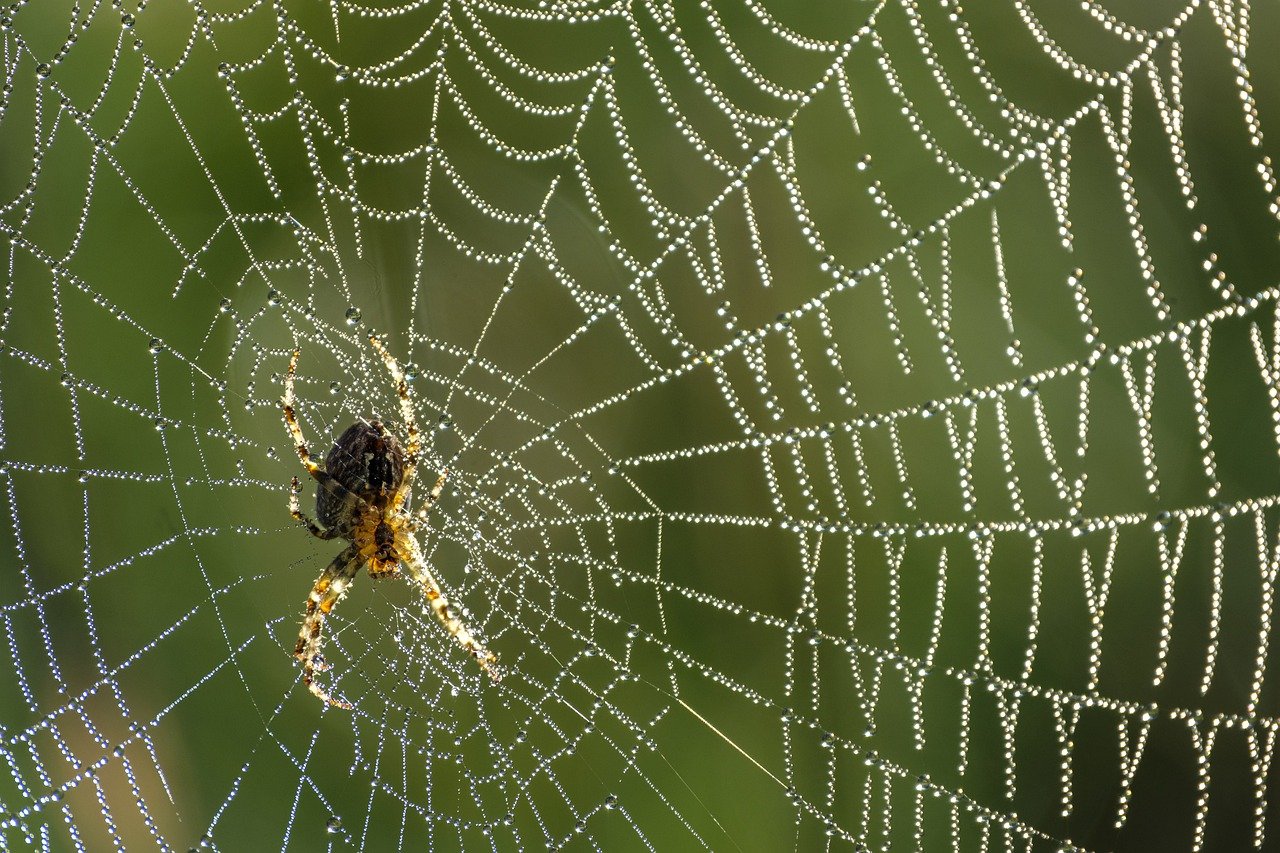
Safe Removal Techniques
When it comes to dealing with spiders and insects in your home, safety is paramount—not just for you, but for the little critters as well. After all, most spiders are more afraid of you than you are of them! So, how do you safely remove these unwelcome guests without resorting to harmful chemicals or causing unnecessary harm? Here are some techniques that can help you achieve a peaceful coexistence with these creatures.
First and foremost, stay calm. Panicking can lead to hasty decisions that might result in injury or damage. If you spot a spider or insect, take a deep breath and assess the situation. Often, the best course of action is to remove them gently rather than squashing them. One effective method is using a glass and a piece of paper. Simply place the glass over the spider or insect, then carefully slide the paper underneath. This way, you can trap the creature safely and transport it outside.
Another technique involves using a vacuum cleaner with a hose attachment. This method is particularly useful for larger infestations. However, it's crucial to use a vacuum that has a bag or a container that can be emptied outside. This prevents the insects from escaping back into your home. Just remember to clean the vacuum afterward to ensure no creatures are left behind!
For those who prefer a more natural approach, consider making a homemade repellent spray. A mixture of water and essential oils, like peppermint or tea tree oil, can be a great deterrent for spiders and insects alike. Simply mix a few drops of essential oil with water in a spray bottle and spray around entry points and areas where you've seen these pests. Not only does it help keep them away, but it also leaves your home smelling delightful!
It's also important to be aware of the right time and place for removal. For instance, if you encounter a wasp nest, it's best to avoid direct confrontation. Instead, call a professional pest control service. Attempting to remove a wasp nest without proper gear can lead to painful stings and serious allergic reactions. Always prioritize your safety and the safety of your family.
Lastly, after removing any spider or insect, take a moment to reflect on how they got there in the first place. This can lead to better preventive measures in the future. Keeping your home clean and clutter-free can significantly reduce the chances of future encounters. Remember, a clean home is a less inviting place for unwanted guests!
Q: What should I do if I find a venomous spider in my home?
A: If you suspect a spider is venomous, it’s best to keep your distance and contact a pest control expert. Do not attempt to handle it yourself.
Q: Are there any natural repellents that really work?
A: Yes! Essential oils like peppermint, lavender, and tea tree oil can act as effective natural repellents for many insects and spiders.
Q: How can I prevent spiders from entering my home?
A: Regular cleaning, sealing cracks and gaps, and using natural repellents around entry points can help keep spiders at bay.
Q: Is it safe to use a vacuum to remove insects?
A: Yes, using a vacuum can be a safe method for removing insects, as long as you empty the vacuum outside afterward to prevent them from returning.
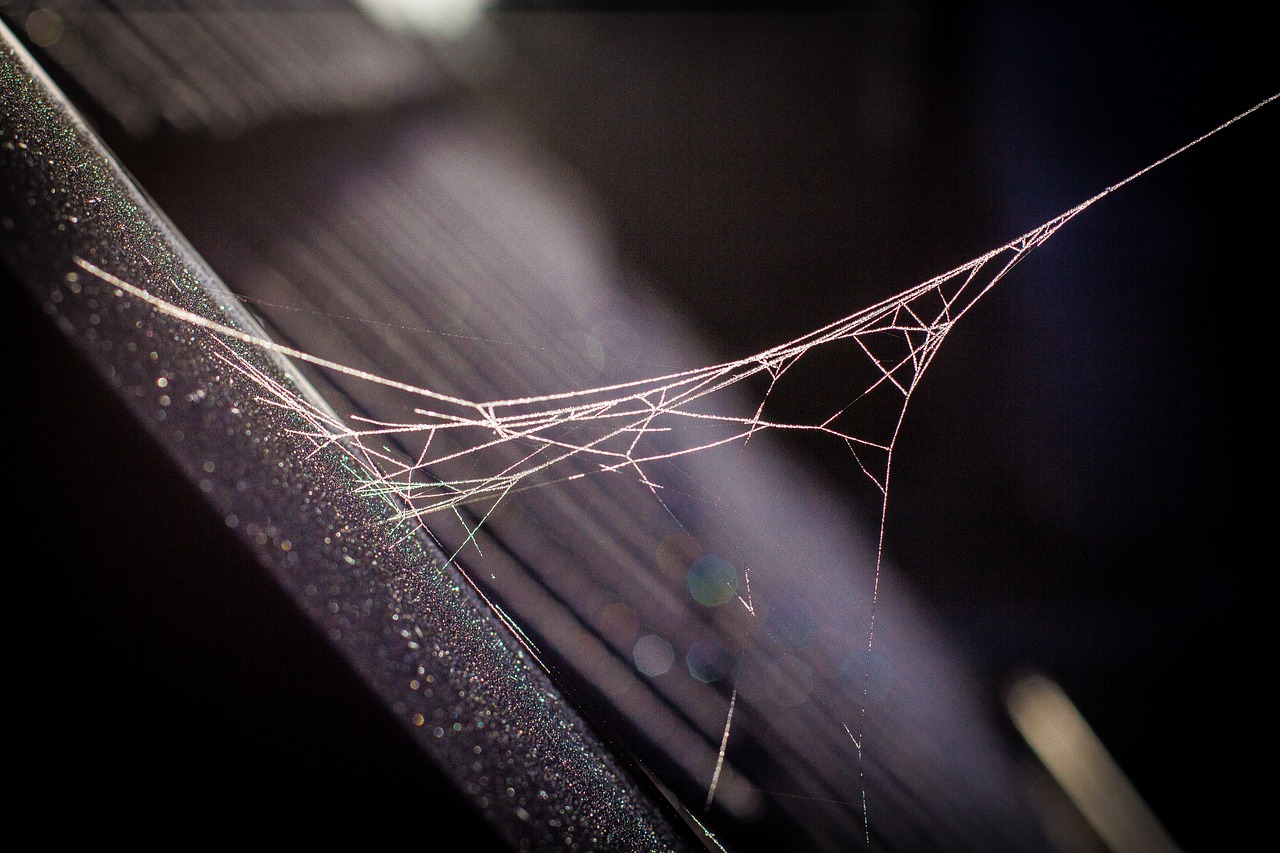
Preventive Measures
When it comes to keeping your home free from unwanted spiders and insects, prevention is key. Think of your home as a fortress; if you want to keep the invaders out, you need to build strong walls and secure gates. The first step in this process is to maintain cleanliness. Regularly vacuuming and dusting your living spaces can significantly reduce the number of insects that find their way into your home. Not only does this remove potential food sources for spiders and insects, but it also eliminates their hiding spots.
Another effective strategy is to seal up entry points. Spiders and insects can squeeze through the tiniest cracks and crevices, so it’s essential to inspect your home for any gaps. Pay special attention to areas around windows, doors, and the foundation. Use caulk or weather stripping to seal these openings. You might be surprised at how much of a difference this can make in preventing these critters from entering your sanctuary.
In addition to sealing entry points, consider your outdoor space. Keep your garden tidy and well-maintained. Overgrown vegetation can provide a perfect habitat for insects. Trim back bushes and shrubs, and keep mulch at least a foot away from your foundation. This not only discourages pests but also enhances the aesthetics of your yard!
Now, let’s talk about the use of natural repellents. Many people are unaware that certain scents can deter spiders and insects. Essential oils like peppermint, tea tree, and citrus are known for their pest-repelling properties. You can create a simple spray by mixing a few drops of your chosen essential oil with water in a spray bottle. Spritz this mixture around doorways, windows, and other potential entry points to keep those pesky invaders at bay.
Finally, don't forget about home maintenance tips. Regularly check for leaks and moisture, as these can attract insects. Fixing plumbing issues and ensuring proper drainage around your home can go a long way in making your home less inviting to pests. Additionally, consider installing screens on windows and doors to provide an extra layer of protection without sacrificing fresh air.
- What are the most effective natural repellents for spiders? Essential oils like peppermint and tea tree are highly effective. Mix them with water and spray around entry points.
- How often should I check for entry points in my home? It's a good idea to check at least once a season, or whenever you notice an increase in spider or insect activity.
- Can I use chemical sprays safely? While chemical sprays can be effective, they can also pose risks to your health and the environment. Always opt for natural solutions when possible.

Natural Repellents
When it comes to keeping your home free from unwanted spiders and insects, can be a game-changer. Not only are these solutions effective, but they also allow you to maintain a healthy living environment without the harsh chemicals that can harm both your family and pets. Imagine walking through your home and being greeted by the refreshing scent of essential oils rather than the pungent odor of synthetic sprays. Sounds pleasant, right?
One of the most popular natural repellents is peppermint oil. This invigorating scent not only smells fantastic but also acts as a powerful deterrent for spiders and various insects. Just a few drops mixed with water in a spray bottle can transform your space into a fortress against creepy crawlies. Simply spray it around windows, doors, and other entry points, and you'll notice a significant decrease in those eight-legged visitors. Plus, the refreshing aroma can uplift your mood!
Another effective natural repellent is vinegar. This common household item is not just for salads; it’s a formidable foe against pests. Mixing equal parts of vinegar and water and spraying it around your home can help keep spiders and insects at bay. The strong smell of vinegar is off-putting to these creatures, making it an excellent option for repelling them without any harmful side effects. Just be cautious where you spray it, as vinegar can affect certain surfaces.
Additionally, you might want to consider using a combination of citrus peels, such as lemon or orange. The natural oils in citrus fruits are known to repel spiders and insects. You can scatter peels around your home or create a citrus-infused spray by steeping the peels in water overnight. Not only will your home smell delightful, but you'll also create an unwelcoming environment for pests.
For those who prefer a more hands-on approach, creating a herbal sachet can be both fun and practical. You can use dried herbs like lavender, rosemary, or mint, which are all known for their pest-repelling properties. Simply fill a small cloth bag with these herbs and hang them in areas where you've noticed pest activity. As the aroma wafts through your home, you’ll be creating a natural barrier against spiders and insects while adding a touch of charm to your decor.
In addition to these methods, it’s essential to maintain a clean and clutter-free environment. Regularly vacuuming and dusting can significantly reduce the chances of attracting spiders and insects. Keeping your living spaces tidy not only makes your home more inviting for you but also less appealing to pests. So, while natural repellents are effective, combining them with good housekeeping practices will yield the best results.
In summary, utilizing natural repellents is a smart and eco-friendly way to manage spider and insect encounters in your home. From essential oils to citrus peels, there are numerous options available that are both effective and pleasant to use. By incorporating these methods into your routine, you can create a safe and comfortable environment for your family while keeping those pesky critters at bay.
- Are natural repellents safe for pets? Yes, most natural repellents like peppermint oil and vinegar are safe for pets when used correctly. However, always check specific oils for safety with your particular pet species.
- How often should I apply natural repellents? It's advisable to reapply natural repellents every few days or after cleaning surfaces to maintain effectiveness.
- Can I mix different natural repellents? Absolutely! Combining different natural ingredients can enhance their effectiveness. Just ensure that the mixtures are safe and suitable for your home.

Home Maintenance Tips
Keeping your home free of spiders and insects is not just about the occasional spray or trap; it's a lifestyle choice that requires consistent effort and attention to detail. Home maintenance plays a pivotal role in creating an environment that is less inviting to pests. Think of your home as a fortress. If you neglect the walls, the drawbridge, and the moat, you're just inviting trouble inside. So, where do you start?
First and foremost, regular cleaning is crucial. Dust and clutter are like a welcome mat for spiders and insects. By maintaining a clean environment, you’re eliminating potential hiding spots. Make it a habit to vacuum regularly, paying special attention to corners, under furniture, and behind appliances. This not only removes existing pests but also their eggs, which can be a hidden threat. Remember, a clean home is a less attractive home for unwanted guests!
Next, consider your landscaping. Overgrown bushes and tall grass can provide perfect hiding spots for spiders and insects. Trim back any overgrown vegetation and keep mulch and wood piles away from your home’s foundation. This simple act can significantly reduce the likelihood of pests making your home their own. If you're feeling adventurous, you might even want to plant some natural deterrents like lavender or mint, which are known to repel certain insects.
Another essential aspect of home maintenance is sealing entry points. You’d be surprised at how many tiny cracks and gaps exist in your home. Inspect your windows and doors for any openings and seal them with caulk or weather stripping. This not only helps keep pests out but also improves your home's energy efficiency. It’s a win-win! Moreover, check for gaps around pipes and electrical wires; these are often overlooked but can serve as highways for pests.
Finally, don't forget about your basement and attic. These areas are often neglected but can be breeding grounds for pests. Ensure proper ventilation and moisture control, as damp environments are particularly attractive to insects. Installing a dehumidifier can help maintain a dry atmosphere, making it less appealing for pests to set up camp. Regularly inspect these spaces for signs of infestation and take immediate action if you spot any trouble.
To summarize, here are a few key home maintenance tips to keep your living space pest-free:
- Keep your home clean and clutter-free.
- Regularly trim landscaping and remove potential hiding spots.
- Seal entry points around windows, doors, and pipes.
- Maintain dry conditions in basements and attics.
By implementing these home maintenance tips, you're not just keeping spiders and insects at bay; you're creating a healthier living environment for you and your family. Like a well-tended garden, a well-maintained home flourishes while keeping unwanted pests at a distance. So roll up your sleeves and get to work; your home will thank you!
Q: What are some signs of a spider infestation?
A: Look for webs in corners, shed skins, and an increase in spider sightings. If you notice these signs, it might be time to take action.
Q: Are there any natural methods to repel insects?
A: Yes! Essential oils like peppermint, tea tree, and lavender can be effective natural repellents when mixed with water and sprayed around your home.
Q: How often should I clean to prevent pests?
A: Regular cleaning is key! Aim for a thorough clean at least once a week, with daily tidying to keep clutter and dust at bay.
Q: Can I seal my home myself?
A: Absolutely! Sealing entry points can be a simple DIY task. Just ensure you have the right materials, like caulk and weather stripping, and follow safety guidelines.
Frequently Asked Questions
- What are the most common spiders found in homes?
Some of the most common spiders you might encounter at home include the house spider, black widow, and brown recluse. House spiders are generally harmless and help control other pests, while black widows and brown recluses can be dangerous and should be approached with caution.
- How can I tell if an insect is harmful?
Identifying harmful insects involves looking for specific characteristics. For example, wasps have a slender body with a narrow waist and can be aggressive. Beetles, like the Asian lady beetle, can also cause problems if they invade your home. Always research or consult a pest control expert if you're unsure.
- What signs indicate a spider or insect infestation?
Common signs of infestation include finding webs in corners, seeing multiple insects, or discovering droppings. If you notice these signs, it's time to take action before the problem escalates!
- Where do spiders and insects typically enter my home?
Spiders and insects often enter through small cracks and gaps around doors, windows, and even vents. They can also hitch a ride on plants or items brought inside. Sealing these entry points can help keep your home pest-free.
- How does the season affect spider and insect activity?
Seasonal changes can significantly influence spider and insect activity. For example, many insects are more active in the warmer months, while spiders may seek shelter indoors as temperatures drop. Being aware of these patterns can help you prepare!
- What are some safe removal techniques for spiders and insects?
Safe removal techniques include using a jar to trap the spider and gently releasing it outside or using a vacuum cleaner for insects. Always prioritize your safety and avoid using harsh chemicals.
- What preventive measures can I take to keep pests away?
To prevent pests, consider keeping your home clean, sealing entry points, and using natural repellents like peppermint oil or vinegar. Regular maintenance can make your home less inviting to these unwanted guests.
- Are there natural repellents that work against spiders and insects?
Yes! Natural repellents like essential oils (peppermint, tea tree, or eucalyptus) can deter spiders and insects without harmful chemicals. Spraying a mixture of these oils with water around your home can help keep them at bay.
- What home maintenance tips can help minimize infestations?
Regularly cleaning your home, decluttering, and ensuring proper ventilation can help minimize infestations. Additionally, trimming back vegetation near your home can reduce the likelihood of pests finding their way inside.



















